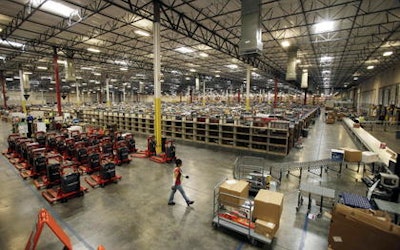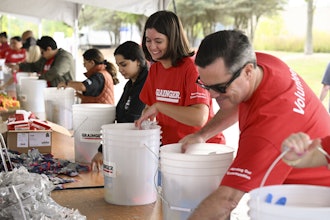
Today’s warehouse managers constantly are challenged to “do more with less.” Most attempt to meet this challenge by finding ways to reduce labor costs. Many have implemented labor measurement systems to measure associates’ productive work, and some have gone a step further by adding incentive-based pay systems to entice higher productivity levels. Few, however, have spent time to understand and manage a key component of labor cost: indirect, or idle, time.
Any distribution operation has numerous non-value added tasks, some necessary to supporting a productive operation and others that occur due to process failures or bottlenecks. Historically, management teams have budgeted for these indirect hours as a percentage of productive time, but various factors — such as lack of detailed tracking, use of general time buckets, and associates’ lack of understanding of what is considered “productive” — prevent them from managing idle time proactively.
Where to start?
As the old adage in the title suggests, it is important to have a proper program for reporting and tracking both productive and non-productive aspects of operations. Looking for ways to remove idle time and eliminate bottlenecks — thereby improving overall efficiency and throughput — requires diligence over time and a focus on continuous improvement. These are some steps for establishing effective management capabilities:
Define idle time buckets/categories. Going through this exercise helps streamline later analysis. It is important to group items together into “like” categories (e.g., equipment breakdowns, spills). In addition to bottlenecks, consider other items that cause indirect time to accumulate, such as battery changes. These may be completely necessary, but there may be ways to streamline and schedule them that will improve efficiency and minimize wait times.
Define the method for capture (e.g., paper logs or RF device time codes). Data collection is highly contingent upon both associates’ and current systems’ capabilities. Regardless of the method, though, associates need to understand that accurate and detailed data is critical to adequate compensation for the work they complete each day. It also is important to have processes for fixing inconsistencies and mitigating false reporting.
Develop a process for reviewing and compiling data. In most warehouses, the person responsible for this is a front-line supervisor or office clerk. Although this part of the process adds management time, it ultimately increases productivity. Analyses should look for trends that point to specific inefficiencies. The more detailed tracking by associates, the easier it will be to identify and resolve roadblocks to greater productivity.
Train front-line supervisors. Supervisors must understand their role goes beyond basic administrative tasks. This means increasing their presence and not “managing” from via a computer screen. Some bottlenecks require the immediate attention of a supervisor on the floor who can quickly address the issue and prevent further idle time from occurring. Whether the issue is a bottleneck, safety, or performance, having a well-trained supervisor on the floor can make the difference between successful and mediocre operations.
Train associates about indirect time and how/what to record. Although training should focus on the how-tos and basic instructions for a new time tracking initiative, associates also must develop a sense of how the program benefits them. Removing bottlenecks in an operation that utilizes incentive-based pay directly benefits them; if they spend more time performing productive tasks and less time sitting idle, their increased efficiency typically translates to increased incentive pay.
A Comparison of Two Companies
These are similar food-service distributors with over $500 million in annual sales and more than 100 production associates within each warehouse. They run receiving and order selection shifts five days per week.
| Company A | Company B |
Fiscal 2013 labor costs | $4.1 million | $3.8 million |
2013 indirect time expense | $435,000 (10.6% of total) | $150,000 (3.9% of total) |
Approach to handling indirect labor costs | “Percent of total hours” goal each year, based on historical values | Proactive approach that includes tracking and reviewing indirect time |
Tracking mechanism | Associates use a generic indirect bucket in their RF devices | Associates track downtime each day using detailed indirect time buckets in RF devices, keep logs regarding equipment breakdowns or other bottlenecks, and report these to management daily |
Other factors | Company is under its 11% indirect budget; thus, it does not proactively analyze root causes of indirect time | Tracking and review processes enabled the company to identify and implement various process improvements and ultimately to reduce staffing levels and increase productivity |
Commit to continuous improvement
It is no longer “good enough” to budget based on past performance or percent of total labor hours. Instead, ongoing approaches that report, analyze, and address bottlenecks are critical to success — and an approach that fosters “buy in” from management and associates will go a long way towards creating that environment of continuous improvement.
Michael Harris is a project manager in West Monroe Partner's workforce optimization practice.






















